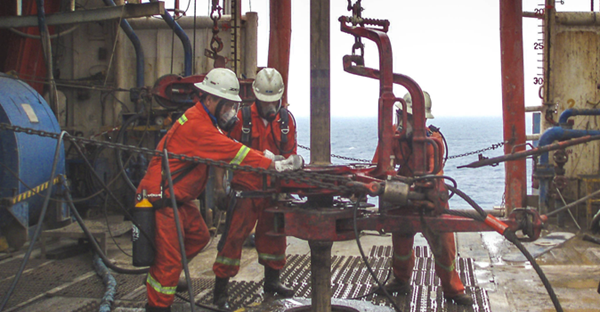An occupational health and safety (OHS) program is a specific action plan to prevent occupational illness and workplace accidents. Although it is impossible to guarantee that a workplace injury or illness will never occur, a sound OHS program will reduce their frequency and provide you with the tools to take preventative and corrective action. A successful OHS program will define responsibilities, identify and controls hazards and risks, determine training needs, and provide a mechanism to track and document your safety record.

Takeaway: Most companies have some kind of safety plan in place already, but creating a formal OHS program will help you reduce incidents and costs, as well as improve safety buy-in among employees.
Many elements of an OHS program are mandatory, and both legislated and monitored through government agencies. Since each business and industry is unique to a certain extent, your OHS program should be designed to meet your specific needs, as well as any legislated requirements.
There are, however, some basic features that every or most OHS programs should have. Those are the ones we’ll be covering in this article.
Where to Begin
Organizations without a formal OHS program will most likely have implemented some aspects of a safety plan. Creating a checklist of what you already have in place is an excellent way to start:
- Does your company have any existing OHS policy?
- Do managers, supervisors, and workers understand their OHS responsibilities?
- Is there a forum for discussing OHS issues?
- Are hazards clearly identified?
- Are there hazard control in place?
- Do you have a check and maintenance system for tools and equipment?
- Are there emergency procedures?
- Are there reporting and investigation procedures in place?
- Is there training available for all levels of staff?
- What methods are in place to keep records?
9 Essential Elements of a Basic OHS Program
1. Policy Statement
The policy statement is a document that clearly defines your company’s commitment to health and safety and provides an overview of your objectives, general responsibilities, and expectations of employees.
The policy statement will be distributed to all parties. It should be reviewed regularly and kept current.
(Read E-Book:Guide for Developing a Workplace Safety and Health Program.)
2. Program Contents
The program will provide a list of specific responsibilities for managers, supervisors, workers, contractors, and visitors.It will outline how to report unsafe equipment and conditions, injury and illness, and dangerous acts.It will provide guidelines for correct work procedures and rules to protect workers, as well as outline instructions for site inspections and equipment maintenance.
(Lear More about Near Miss overview.)
3. Safety Coordinator and Safety Committee
Creating a safety committee with representation from managers, supervisors, and workers is a great way to get safety-related input from all employee groups and instill company-wide safety buy-in.
4. Employee Orientation
New employees, those returning to work after a prolonged absence, and any worker moved to a new location should receive site orientation so that they are familiar with any workplace hazards and emergency procedures. Creating an orientation checklist is an excellent way to ensure the process is complete.
5. Ongoing Training
Formal safety training should be part of your program and in many cases is a requirement of government legislation.
It is the responsibility of the employer to ensure that the approved training has taken place and that milestones are documented.
Your OHS program should outline required and optional training requirements for each position in your organization.
6. Reporting and Inspections
Creating a system where both supervisors and workers can easily report unsafe working conditions is essential to your OHS plan.
Safety inspections by members of your safety committee or by your safety coordinator should take place regularly. By pre-planning for workplace inspections and by using safety checklists, your workers will be ready for both routine assessments and unexpected events.
(Find out how to peform Work Place Safety Inspeciton.)
7. Program Evaluation and Recordkeeping
To make ongoing improvements to your OHS program, you must understand the incidents occurring within your organization. You will need to track incident numbers and know whether they are increasing or decreasing.
(Find out how to Safety Management Record keeping .)
Recording and analyzing your safety data will help you determine if incidents are more frequent in a specific area of your operation or related to a particular environment such as lighting or road conditions. Connect related HR information to learn if accidents are related to a specific job, lack of training, amount of experience, or length of shift.
Once you understand the frequency and nature of workplace incidents, you will be able to make informed adjustments to both operations and OHS policy.
8. Emergency Procedures
Your OHS program should include ways to deal with unexpected events like fires, natural hazards, and explosions. As decisions during these incidents will need to be made very quickly to mitigate damage and injury, specific procedures must be in place. Training and regular emergency drills should be part of this protocol.
(Learn more about Muster Points: How to Keep Your Team Safe During an Emergency.)
9. Communication and Employee Engagement
Workers, supervisors, and management should all welcome discussions about safety. Regular meetings with all employees to discuss incidents, hazards, and safety procedures will engage your employees. By informing management of their safety concerns and providing a forum to share ideas, celebrating individual and team success, you will quickly build enthusiasm for your safety program.
Benefiting from Your OHS Program
By establishing policy, defining responsibilities, identifying hazards, facilitating incident reports, all supported by worker training and workplace maintenance programs, you will be well on your way to establishing a successful OHS program.
More importantly, the process defined in your safety program will help you integrate health and safety into all aspects of your business operations. With a well-planned OHS program, your company will enhance its reputation with both workers and external audiences. Through a reduction in injuries, illness, equipment failure, and escalating associated costs, your investment in health and safety will make a positive impact on the workplace and your bottom line.



